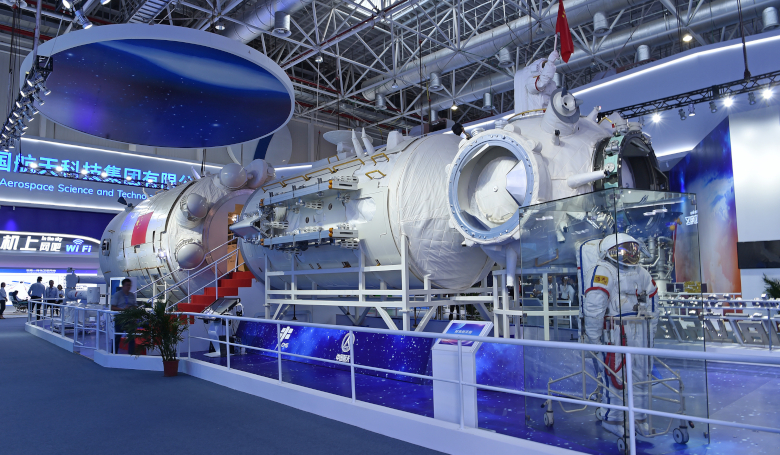China plans to launch the core module of its crewed space station in the first half of 2021, a senior official said Friday.
Discussing details of the launch at a handover ceremony in Shaoshan, central China's Hunan Province, Zhou Jianping, chief designer of China's crewed space programme said the Tianhe core module will be sent by a Long March-5B Y2 rocket from the Wenchang Spacecraft Launch Site in Hainan Province.
Both Tianhe, which translates as "Unification of Heaven" and the Long March launcher are undergoing final tests.
The crew to construct the station have been selected and training is underway, although no specific crew members have yet been named. It was at one point speculated that the mission might involve one or more female Taikonauts, and could mark the first time a Chinese woman commands a space mission or performs an extravehicular activity (EVA).
After launching the core module next year, Jianping said China will launch the Tianzhou-2 cargo spacecraft and the Shenzhou-12 crewed spacecraft one after another. The astronauts are then expected to stay in space for several months, Jianping added.
Once that mission is complete, the Tianzhou-3 cargo spacecraft and the Shenzhou-13 crewed spacecraft will be launched and a second group of astronauts sent into space, said Jianping.
All in all, around 11 launches in the next two years are expected for the assembly of the 66 tonne space station.
Designed in a T shape with the core module at the centre and a lab capsule on each side, more than a dozen advanced experiment racks will be installed, with each rack regarded as a lab that can support various space experiments.
As such, science facilities on the station could support hundreds of research projects in fields such as astronomy, space life science, biotechnology, microgravity, basic physics and space materials.
Chinese astronauts will shoulder many tasks in the construction of the space station said Jianping at a previous press conference. "They will conduct many complex extravehicular tasks, and work with mechanical arms to complete the installation, testing, adjustment and upgrading of the payloads in orbit," he said.
Named Tiangong, meaning Heavenly Palace, the station will be able to accommodate three astronauts in normal circumstances and up to six during a crew replacement.
Final construction is targeted for 2022 and once complete it will operate in a low-Earth orbit at an altitude from 340 kilometres to 450 kilometres for more than 10 years.











